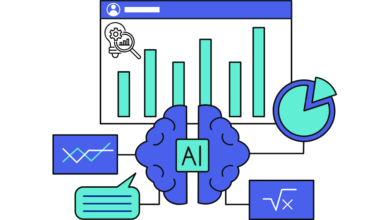
Artificial intelligence (AI) has moved rapidly from science fiction to a staple of our daily lives in recent years. While some industries have been using early iterations of the technology for over a decade – for example in email spam filters – it is only recently that advances in computing power have opened the door to true AI-driven innovation. Large language model (LLM) based generative AI (GenAI) walked boldly through that door when ChatGPT took the world by storm at the end of 2022. Now AI is on every boardroom agenda, from Delhi to Detroit.
For technology leaders, there has been a particular focus on how GenAI can support their ongoing mission to accelerate digital innovation. However, while it can in theory supercharge the productivity of DevOps and security teams, GenAI also introduces risks. As they prepare to take advantage of the benefits and navigate these risks, a recent report – The state of AI 2024: Challenges to Adoption and Key Strategies for organizational success identified five key trends that technology leaders should be aware of.
1. AI investments are skyrocketing
Digital transformation accelerated sharply during the pandemic. That momentum has continued to increase, despite rising interest rates and increased macroeconomic and business uncertainty. That’s understandable at a time when carving out competitive advantage has become more important than ever. The beneficial impact of GenAI is also something most boards agree on. McKinsey estimates it could add between $2.6 and $4.4 trillion of business value annually across 63 use cases.
As they continue to invest so they can capitalize on these benefits, organizations’ biggest priorities include using GenAI to improve customer experience and support (34%) and accelerate the speed of software development (26%). That makes sense, given that skills shortages persist in both areas, and outsized gains can be made using AI-driven automation to enhance the productivity of existing staff.
2. GenAI will be a force multiplier for DevOps and security
When implemented effectively, GenAI can be like an extra member of the DevOps and security team. 93% of IT leaders expect AI to accelerate software deployment and delivery. However, GenAI isn’t just about generating code on demand when prompted, but also suggesting bug fixes and potentially automating the process of vulnerability management. This could enhance the quality of code releases, reduce the risk of security holes, and enable real-time response to threats.
It also helps to free up staff to focus on higher-value work, such as planning and building more secure software architectures, and enhancing the customer experience. That will help to fulfill what should be a key mandate for security teams – giving the business the confidence to accelerate innovation-led growth.
3. AI will help organizations manage multi-cloud complexity
It’s critical that modern organizations can innovate at speed to meet rising customer expectations. However, the cloud-native architecture on which today’s digital experiences are built is increasingly complex. The applications that run in these environments contain millions of lines of code and billions of dependencies.
To manage this complexity, DevOps and security teams need a more mature way to derive insight from the huge volumes of data generated by their clouds. AI-powered observability has therefore become mandatory. It provides the key to teams’ ability to access the real-time answers needed to automate complex business processes and enhance operational efficiencies. That could include anything from automated attack detection and blocking, to right-sizing cloud environments to enable more effective cost management. Some 83% of technology leaders admit that AI is now essential given the sheer size, speed and dynamism of their cloud environments.
4. Organizations will need to implement AI guardrails
As transformative as GenAI can be, it also raises significant security and compliance concerns. The Cambridge dictionary’s word of the year for 2023 is “hallucinate” – a word that has gained extra significance about GenAI models that create inaccurate or inconsistent statements. 98% of technology leaders are worried that GenAI could deliver answers that are biased, erroneous, or misinformed due to this tendency to hallucinate.
Enterprises will be increasingly mindful of these risks in 2024. To overcome their concerns, they will turn to AI platforms that have been purpose-built with security and privacy requirements in mind. This will enable them to explore the seemingly limitless possibilities of AI with confidence, by having guardrails in place to maintain security and ensure safe adoption practices.
5. Composite AI will emerge as the key to success
As their adoption strategies mature, organizations will need a clear understanding of the difference between various models and types of AI so they can identify the best solution for each use case. For example, causal AI is well suited for determining the precise underlying causes and effects of events or behaviors in a system based on its topology or structure. Predictive AI can help to pre-empt and prevent problems before they occur, using machine learning models trained on historical data. GenAI boosts productivity by creating new content, from news articles to lines of code, or dashboards in a monitoring solution.
Each of these types of AI brings its advantages. However, for more complex use cases, such as creating new software and resolving security vulnerabilities quickly, organizations will need to adopt a composite approach – combining different types of AI and data sources, to enable more advanced reasoning and automation.
Thriving in an AI-driven world
AI is already transforming the way organizations work. As this trend continues, organizations are set to reduce manual toil and enhance the productivity of their DevOps and security teams dramatically. They are also being empowered to extend access to analytics-driven insight to non-technical users for the first time, helping to further reduce the burden on DevOps and security teams. In such a rapidly evolving space, those able to explore and unlock this potential most effectively stand the best chance of success.



